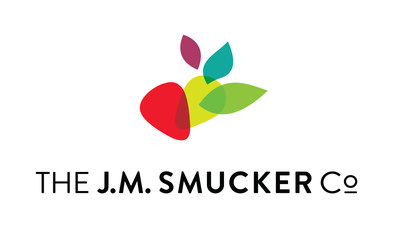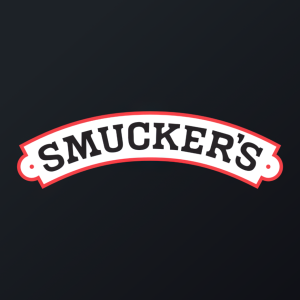The J.M. Smucker Co. Completes the Divestiture of its Crisco® Business and Updates Fiscal Year 2021 Outlook
The J.M. Smucker Co. has completed the sale of its Crisco® oils and shortening business to B&G Foods for $550 million. The divestiture, which aligns with the company's strategy to exit the U.S. baking category, impacts fiscal 2021 guidance by removing $100 million in net sales and $0.20 in adjusted EPS. The updated guidance expects fiscal 2021 net sales growth of flat to 1 percent and adjusted EPS between $8.35 and $8.65. The company continues to expect free cash flow of $975 million to $1,025 million.
- Completed the sale of Crisco® business for $550 million.
- Focus on core growth areas: pet food, coffee, and snacking.
- Fiscal 2021 free cash flow guidance remains strong at $975 million to $1,025 million.
- Divestiture removes $100 million in net sales from fiscal 2021.
- Adjusted EPS guidance decreased by $0.20 due to divestiture.
- Ongoing COVID-19 impacts create uncertainty for fiscal 2021 outlook.
ORRVILLE, Ohio, Dec. 1, 2020 /PRNewswire/ -- The J.M. Smucker Co. (NYSE: SJM) announced today the closing of the transaction to sell its Crisco® oils and shortening business to B&G Foods, Inc. for
The Company updated its full-year fiscal 2021 guidance to reflect the impact of the divested business. The outbreak of COVID-19 continues to impact financial results and cause uncertainty of the full-year fiscal 2021 outlook. Changes in consumer purchasing behavior, retailer inventory levels, macroeconomic conditions, and any manufacturing or supply chain disruption could materially impact our actual results. This guidance reflects expectations based on the Company's current performance and understanding of the overall environment.
Updated guidance reflects the removal of divested net sales for the remainder of fiscal 2021 of approximately
The J.M. Smucker Co. Forward-Looking Statements
This press release contains forward-looking statements, such as projected net sales, operating results, earnings, and cash flows that are subject to risks and uncertainties that could cause actual results to differ materially from future results expressed or implied by those forward-looking statements. The risks, uncertainties, important factors, and assumptions listed and discussed in this press release, which could cause actual results to differ materially from those expressed, include: the impact of the COVID-19 pandemic on the Company's business, industry, suppliers, customers, consumers, employees, and communities, particularly with respect to the Company's Away From Home business; disruptions or inefficiencies in the Company's operations or supply chain, including any impact of the COVID-19 pandemic; the ability to achieve cost savings related to cost management programs in the amounts and within the time frames currently anticipated; the ability to generate sufficient cash flow to continue operating under the Company's capital deployment model, including capital expenditures, debt repayment, dividend payments, and share repurchases; volatility of commodity, energy, and other input costs; risks associated with derivative and purchasing strategies the Company employs to manage commodity pricing and interest rate risks; the availability of reliable transportation on acceptable terms, including any impact of the COVID-19 pandemic; the ability to implement and realize the full benefit of price changes, and the impact of the timing of the price changes to profits and cash flow in a particular period; the success and cost of marketing and sales programs and strategies intended to promote growth in the Company's businesses, including product innovation; general competitive activity in the market, including competitors' pricing practices and promotional spending levels; the impact of food security concerns involving either the Company's products or its competitors' products; the impact of accidents, extreme weather, natural disasters, and pandemics (such as COVID-19); the concentration of certain of the Company's businesses with key customers and suppliers, including single-source suppliers of certain key raw materials and finished goods, and the Company's ability to manage and maintain key relationships; impairments in the carrying value of goodwill, other intangible assets, or other long-lived assets or changes in useful lives of other intangible assets or other long-lived assets; the impact of new or changes to existing governmental laws and regulations and their application, including tariffs; the outcome of tax examinations, changes in tax laws, and other tax matters; foreign currency exchange rate and interest rate fluctuations; and risks related to other factors described under "Risk Factors" in other reports and statements filed with the Securities and Exchange Commission, including the Company's most recent Annual Report on Form 10-K. The Company undertakes no obligation to update or revise these forward-looking statements, which speak only as of the date made, to reflect new events or circumstances.
About The J.M. Smucker Co.
Each generation of consumers leaves their mark on culture by establishing new expectations for food and the companies that make it. It is our privilege to be at the heart of this dynamic with a portfolio that appeals to each generation of people and pets and is found in 90 percent of U.S. homes and countless restaurants. This includes a mix of iconic brands consumers have always loved such as Folgers®, Jif® and Milk-Bone® and new favorites like Café Bustelo®, Smucker's® Uncrustables® and Rachael Ray® Nutrish®. By continuing to immerse ourselves in consumer and pet parent preferences for food, how it's purchased and how the companies that make it should operate, we will maintain the important role we play in their lives. This will allow us to continue growing our business and the positive impact we have on all of those who count on us. For more information, please visit jmsmucker.com.
The J.M. Smucker Co. is the owner of all trademarks referenced herein except for Rachael Ray®, a registered trademark of Ray Marks II LLC, which is used under license.
Non-GAAP Financial Measures
The Company uses non-GAAP financial measures, including: net sales excluding foreign currency exchange; adjusted gross profit; adjusted operating income; adjusted income; adjusted earnings per share; earnings before interest, taxes, depreciation, amortization, and impairment charges related to intangible assets ("EBITDA (as adjusted)"); and free cash flow, as key measures for purposes of evaluating performance internally. The Company believes that investors' understanding of its performance is enhanced by disclosing these performance measures. Furthermore, these non-GAAP financial measures are used by management in preparation of the annual budget and for the monthly analyses of its operating results. The Board of Directors also utilizes certain non-GAAP financial measures as components for measuring performance for incentive compensation purposes.
Non-GAAP measures exclude certain items affecting comparability that can significantly affect the year-over-year assessment of operating results, which include amortization expense and impairment charges related to intangible assets; divestiture, acquisition, integration, and restructuring costs ("special project costs"); gains and losses related to the sale of a business; unallocated gains and losses on commodity and foreign currency exchange derivatives ("unallocated derivative gains and losses"); and other one-time items that do not directly reflect ongoing operating results. Income taxes, as adjusted is calculated using an adjusted effective income tax rate that is applied to adjusted income before income taxes and reflects the exclusion of the previously discussed items, as well as any adjustments for one-time tax-related activities, when they occur. While this adjusted effective income tax rate does not generally differ materially from the GAAP effective income tax rate, certain exclusions from non-GAAP results can significantly impact the adjusted effective income tax rate.
These non-GAAP financial measures are not intended to replace the presentation of financial results in accordance with U.S. GAAP. Rather, the presentation of these non-GAAP financial measures supplements other metrics used by management to internally evaluate its businesses and facilitates the comparison of past and present operations and liquidity. These non-GAAP financial measures may not be comparable to similar measures used by other companies and may exclude certain nondiscretionary expenses and cash payments.
The following tables provide a reconciliation of the Company's fiscal 2021 guidance for estimated adjusted earnings per share and free cash flow.
Year Ending April 30, 2021 | ||||||
Low | High | |||||
Net income per common share – assuming dilution reconciliation: | ||||||
Net income per common share – assuming dilution | ||||||
Unallocated derivative losses (gains) (A) | (0.25) | (0.25) | ||||
Amortization | 1.56 | 1.56 | ||||
Gain on divestiture (B) | (0.31) | (0.31) | ||||
Pension plan termination settlement charge | 0.19 | 0.19 | ||||
Adjusted earnings per share | ||||||
(A) As unallocated derivative losses (gains) vary each quarter based on market conditions and derivative positions taken, the Company does not project derivative gains or losses on a forward-looking basis. Therefore, the forward-looking unallocated derivative losses (gains) in the table above reflect the net cumulative amount already recognized in GAAP results as of October 31, 2020, that is expected to be allocated to non-GAAP results in future periods. | ||||||
(B) As disclosed in the Company's most recent quarterly filing on Form 10-Q, the pre-tax gain on divestiture is estimated to be approximately | ||||||
Year Ending April 30, 2021 | ||||||
Low | High | |||||
(Dollars in millions) | ||||||
Free cash flow reconciliation: | ||||||
Net cash provided by operating activities | ||||||
Additions to property, plant, and equipment | (315) | (315) | ||||
Free cash flow | ||||||
![]() View original content to download multimedia:http://www.prnewswire.com/news-releases/the-jm-smucker-co-completes-the-divestiture-of-its-crisco-business-and-updates-fiscal-year-2021-outlook-301183065.html
View original content to download multimedia:http://www.prnewswire.com/news-releases/the-jm-smucker-co-completes-the-divestiture-of-its-crisco-business-and-updates-fiscal-year-2021-outlook-301183065.html
SOURCE The J.M. Smucker Co.
FAQ
What was the sale price of the Crisco business by J.M. Smucker Co.?
How will the divestiture of the Crisco business affect SJM's fiscal 2021 earnings?
What is the updated fiscal 2021 guidance for J.M. Smucker Co. after selling Crisco?








